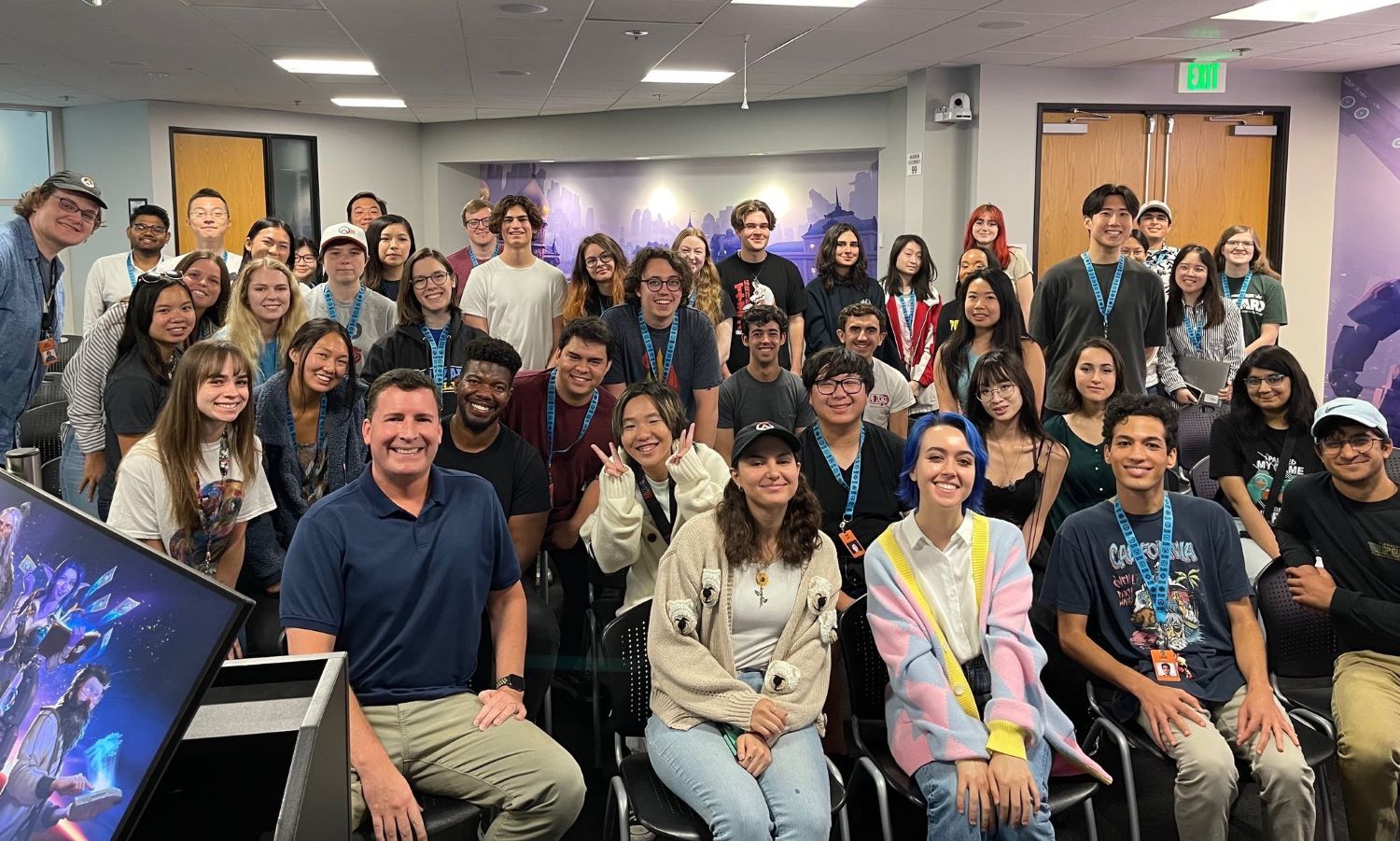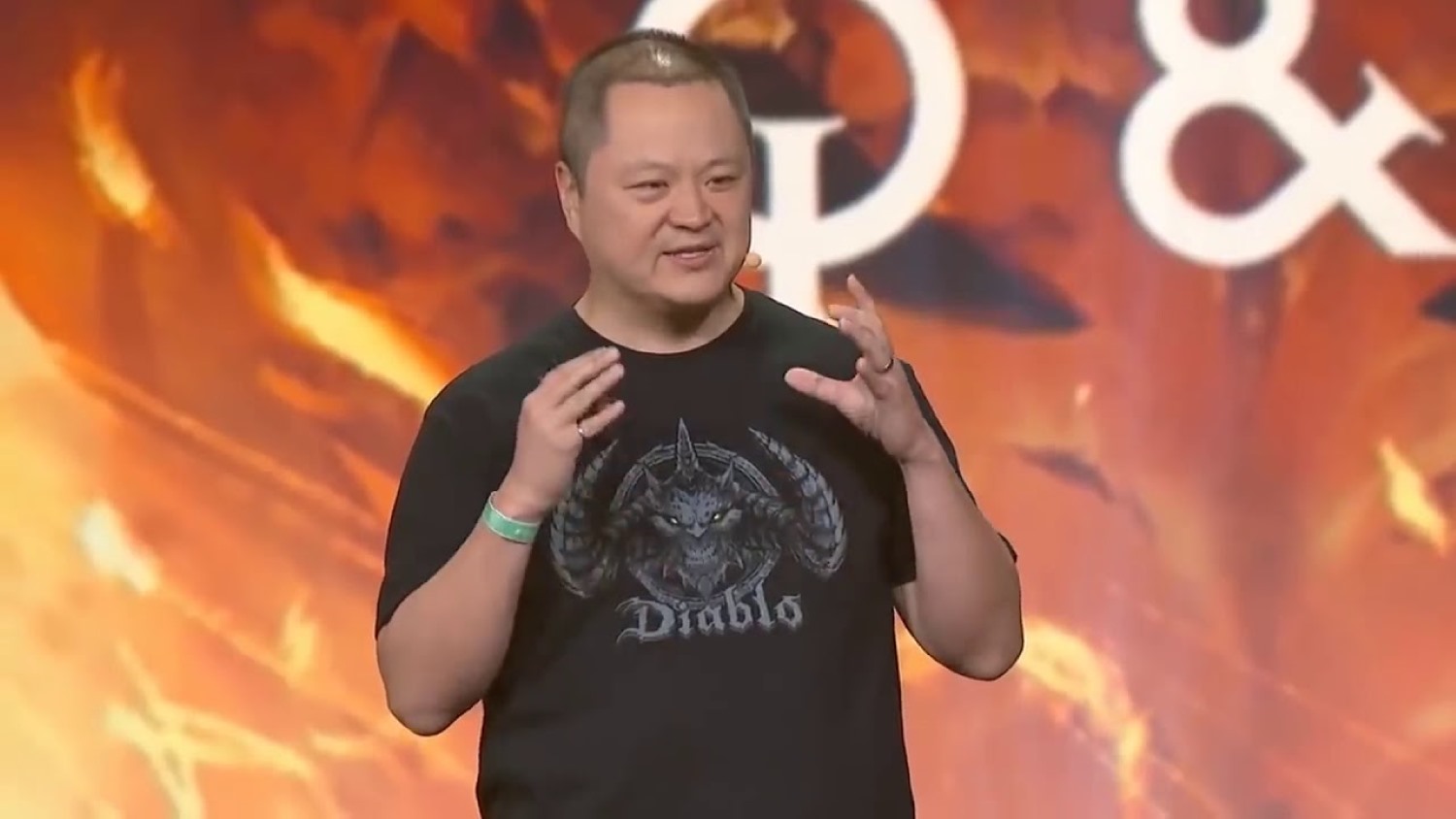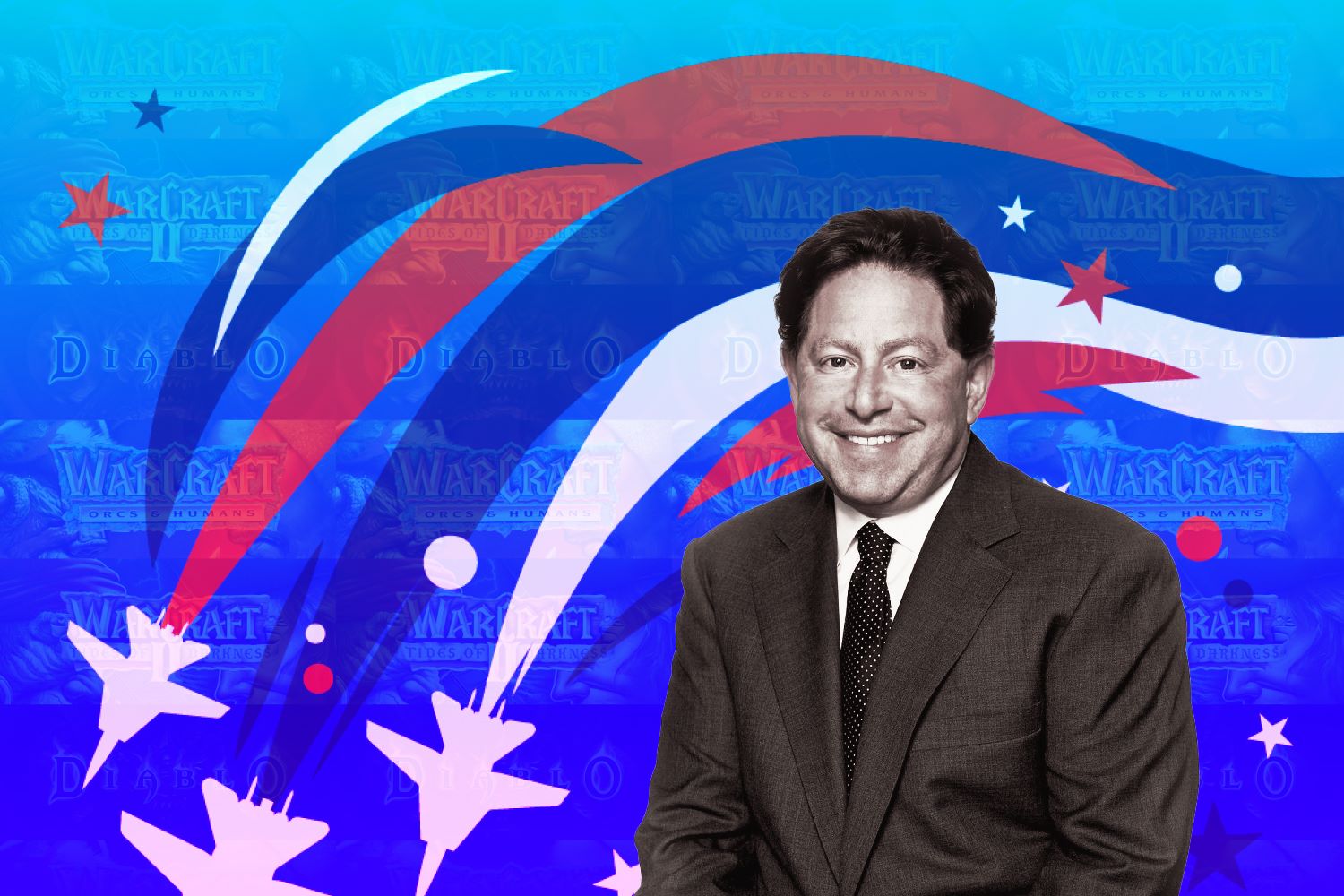Blizzard’ Free Fall – From a Classic Powerhouse to Everyone’s Pet Peeve
As stated by Cambridge Dictionary, blizzard is a severe snowstorm with strong winds. That might be the driving force behind how Blizzard Entertainment got its name while flipping through the dictionary. They was hoping for a future where they could take the game industry by storm. And it has become true for Blizzard.
If you’re a gamer, you must be familiar with classics like World of Warcraft, Diablo, and Overwatch. These games has been so well known that everyone at least has heard of these names, even the people who don’t play games. Its developer and publisher, Blizzard has gained a massive appeal and built huge fan base thanks to the success of these games.
Blizzard has been a powerhouse since its inception, it has become the beloved of everyone. However, no one has prepared for the script to be flipped when the lover Blizzard has turned into an absolute disappointment, and has felt so low in the industry, and it just happened in a couples of years. We got a long list of their scandals to be told, but before dive in the main course, let’s examine why Blizzard has gained the upper hand in the industry.
Blizzard – The Once Real Game Changer
In 1991, Blizzard Entertainment, initially named Silicone and Synapse, was founded by three friends and fellow gamers: Michael Morhaime, Frank Pearce and Allen Adham.
For the first three years, the company was the third-party developer for other video game development companies. Silicone and Synapse collaborated with major names like Sega Genesis and Super Nintendo to create many classics, such as The Lost Vikings, Blackthorne, The Death and Return of Superman, and Rock ‘n Roll Racing.
However, it wasn’t until 1994 that the company really took off, thanks to two main things. First, Silicone and Synapse changed its name to Blizzard Entertainment. Second, they released their first game, Warcraft. It was a huge hit and instantly put Blizzard Entertainment on the map for success.
Four years later, in 1998, Blizzard Entertainment released another big hit, StarCraft. By then, Warcraft had already set the stage for multiplayer games. Even though StarCraft brought in some new features that have become standard in real-time strategy games since then, its extremely positive reception led to it winning numerous awards and being hailed as the best real-time strategy game ever made.
Blizzard Entertainment didn’t stop there. As you might be aware, the company has another classic title in its arsenal: Diablo. Despite its delayed launch, as it was the best-selling game of 1997, the success of Diablo surpassed expectations.
Multiplayer games were gradually becoming incredibly popular, and Blizzard Entertainment played a significant role in driving this trend by consistently delivering amazing titles year after year, thereby contributing to their widespread popularity.
Another monumental success cemented the legacy of Blizzard Entertainment when the company launched its first MMO (Massively Multiplayer Online Role-Playing Game), World of Warcraft.
From day one, WoW was a massive hit, selling over 280,000 copies on its debut. It quickly set new sales records and gained 1.5 million subscribers in North America before expanding to Europe and Asia. WoW soon became the epitome of the MMO game genre, leaving other titles far behind and cementing Blizzard’s dominance in the industry.
Blizzard appeared unstoppable during its winning streak. However, things took a turn when Activision acquired Blizzard Entertainment. While the merger seemed promising at first, Activision Blizzard’s once pristine reputation began to falter soon after.
The Human Side that Made the Silk Stained

Since then, we have heard many incidents that the company jumped in the wrong holes, or even a toxic workplace which supported by the executives. That’s the first main point of why they has entered a downturn – the human side. And all of this can be traced back to Bobby Kotick, the former CEO of Activision Blizzard.
Bobby Kotick is credited with revitalizing Activision in the early 1990s, transforming it into the multi-billion dollar company it is today. However, he is also one of the industry’s more controversial figures, known for prioritizing profits and shareholder returns over delivering a enjoyable gaming experience for players.
Wrong Take – Profits Over User’s Experiences
Under the leadership of Bobby Kotik, the new company added ever more exploitative monetization schemes to Warcraft.
Even prior to Kotick’s tenure, there were cosmetic items available for purchase. However, under his leadership, Warcraft introduced a paid “character boost” in 2013, enabling players to bypass the traditional process of skill and power progression through gameplay and directly access the end game. Furthermore, in 2015, they introduced the “WoW token,” an in-game item purchasable with real money, providing one month of game time and could be traded in the game’s auction house.
Both the character boost and token undermined Warcraft’s core value proposition. The character boost enabled players to skip significant portions of the game’s content after purchasing the game and paying a subscription fee, devaluing the immersive experience and progression.
Similarly, the introduction of the token allowed players to buy top-quality in-game items with real money, contradicting Blizzard’s previous condemnation of such practices through third-party sellers and cheapening the gameplay experience.
As Warcraft shifted its focus from nurturing a dedicated fan community to maximizing profits, player sentiment towards the game began to sour. Subscription numbers peaked in 2010 and gradually declined, potentially reaching around 5 million by 2021 (though official statistics ceased in 2015). Furthermore, many key members of the development team departed over time, leading to a decline in the quality of expansions.
For gamers, Kotick represents the epitome of corporate greed, prioritizing profits over artistic integrity and player welfare. But for investors, the story is different: Under Kotick’s leadership, Activision Blizzard grew into a $75.4 billion company, leading to its acquisition by Microsoft. He’s seen as a highly successful entrepreneur, set to receive a lucrative golden parachute upon his departure.
And adding exploitative monetization schemes to game titles isn’t the only way for Bobby Kotik to gain more money, he has a few more, and one of those is laying off employees.
Lay off Employees Like They Don’t Contribute to the Record

Layoffs are sometimes unavoidable, but Blizzard has faced criticism not just for the necessity of these layoffs, but also for their circumstances and frequency. In 2012, they had their first significant round of layoffs, affecting 600 employees, following the first major decline in subscriptions to World of Warcraft. Then, in 2019, they laid off 800 employees despite recording record profits and increasing dividends.
Two years later, in the wake of Activision Blizzard laying off a significant number of employees last week, it has come to light that CEO Bobby Kotick is poised to receive a payout of nearly $200 million in 2021. Despite nearly 190 Activision Blizzard employees being let go, receiving (along with a generous severance package) only $200 in Battle.net gift cards as a farewell, it appears that the company is prioritizing its executives’ welfare over that of its employees.
In 2024, Microsoft laid off 1,000 employees within their entire video game division, which included Blizzard. When people keep seeing headlines about more layoffs alongside high profits and executive bonuses, it leads to negative opinions about Blizzard.
Bowed to the Chinese Government – Banned a Patriot
In 2019, in Hong Kong, there were troubling developments. The government proposed a bill that would increase China’s authority over the region, which didn’t sit well with many people.
Meanwhile, a Hong Kong native named Blitzchung is competing in the Hearthstone Esports League. After winning, he takes the opportunity during a post-game interview to express support for the protests. Blizzard, with a massive player base in China, seeks to maintain favor with the Chinese government. As a result, they swiftly remove Blitzchung from the competition.
Blizzard suspended him from professional play for a year, citing a violation of the 2019 Hearthstone Grandmasters Official Competition rules. They banned him from Hearthstone esports for 12 months and revoked the $10,000 USD prize money he was due to receive.
After Blitzchung’s punishment, Blizzard faced significant backlash from its fans, professional players, and game industry professionals. Some even initiated boycotts against its games.

After a few days of pressure, J. Allen Brack eventually comes out. He reduces the ban to half a year and grants Blitzchung his prize money back. He also says that Blizzard’s relationships with China had no influence on their decision.
The Last Place that You Want to Work
Activision Blizzard faced criticism for its harsh working conditions and huge pay gap. In 2019, CEO Kotick earned $28.6 million, 306 times more than the average employee. While some employees like producers and engineers earned six-figure salaries, others in roles like quality assurance and customer service barely made above minimum wage.
Internal messages from 2018 revealed that some employees were finding it difficult to make ends meet on their current pay, resorting to cost-cutting measures like skipping meals and relying on the company’s complimentary coffee to stave off hunger. According to a longtime employee interviewed by Bloomberg, they are now earning less than they did almost a decade ago due to minimal raises and alterations in overtime hours.
Activision Blizzard has been accused of just about any type of wrongdoing in the workplace that you could even imagine: racial discrimination, bullying, sexual harassment, pregnancy discrimination, to name a few.
The California Department of Fair Employment and Housing had been conducting an investigation into Activision Blizzard following numerous reports of sexual harassment from staff.
By July 2021, they had gathered enough evidence to file a lawsuit. According to the lawsuit, sexual harassment, unwanted advances, and groping were pervasive within Blizzard, both before and after the merger. The suit also mentions an Executive Suite at the 2013 BlizzCon, referred to by some employees as the “Cosby Suite.”
Apart from reports of underpaying women and ignored complaints to HR and the president, another serious issue arose: employees’ breast milk was reportedly being stolen. This sparked widespread outrage and made headlines across the industry.
The Wall Street Journal also claimed that Bobby Kotick knew about these incidents, disregarded them, and in some cases, even participated. Although Kotick denied most allegations, he did apologize for leaving a voicemail threatening to have his assistant killed.
Sponsors like T-Mobile, Coca-Cola, Kellogg, IBM, and Pringles all withdrew their support from the Overwatch Esports League. Additionally, Activision Blizzard faced a class-action lawsuit filed by its shareholders. While efforts have been made to address the situation, recovering from such a blow is challenging.
The Products – The Games Has Been Upsetting Loyal Fans
Not only the human side that has made headlines over the last couple of years, but also the classics that helped the name Blizzard popular, has been disappointing its fan base.
“Don’t You Guys Have Phones?”
On November 2nd, 2018, Blizzard Entertainment revealed Diablo Immortal, a mobile addition to the Diablo RPG series. During the presentation, someone inquired if the game would also be playable on PC.
The lead game designer, Wyatt Cheng, confirmed it would be solely for mobile platforms, eliciting boos from the audience. Cheng then responded, “Do you guys not have phones?”

Fans have labeled this incident as the prime example of Blizzard’s lack of understanding. Reflecting on that comment, a popular thread with almost 4,000 upvotes quips, “People say Blizzard is disconnected from their fans. But touch is the only way you’ll play the next Diablo game. Don’t you all have phones anyway?”
Additional threads on the subreddit criticized Blizzard for “killing” Diablo and described the game as a “slap in the face.” Some even justified disrespecting Blizzard employees. Meanwhile, users on Diablo’s official forum rallied for boycotts and petitioned to have Immortal canceled.
Tone-Deaf – Ignoring Users’ Feedback
The first half of 2018 remained relatively quiet for Blizzard, but shortly after the launch of Battle for Azeroth in August, World of Warcraft players became highly vocal.
During its beta phase, players began voicing complaints about new systems like Azerite Armor, citing confusion and lack of rewards. Despite the feedback, it appeared that Blizzard was not implementing positive adjustments.
Players grew frustrated with the lack of communication from the development team regarding longstanding issues. By September, the situation had deteriorated to the point where game director Ion Hazzikostas issued an apology to the community. He pledged to improve communication and address the numerous problems plaguing Battle for Azeroth.
Warcraft 3: Reforged – An Absolute Disappointment
First announced at BlizzCon 2018, Warcraft 3: Reforged was meant to be an ambitious remaster of the original 2002 real-time strategy game. It promised HD graphics, re-recorded cutscenes, and upgraded user interface and world editor.
However, when it finally launched in January 2020, Reforged fell short on many of these promises. Maps looked worse than advertised, re-recorded voice overs were scrapped, and essential features like clans and offline play were missing.
The new End User License Agreement (EULA) gave Blizzard full ownership of Reforged mods, angering Warcraft 3’s modding community. Reforged effectively replaced the original game, leaving players unable to access it without buying a physical copy.
The backlash was so severe that Brack later apologized, promising to improve the game. A Bloomberg report from 2021 blamed much of Reforged’s failures on mismanagement and budget cuts by Activision, forcing the team to abandon key features.









